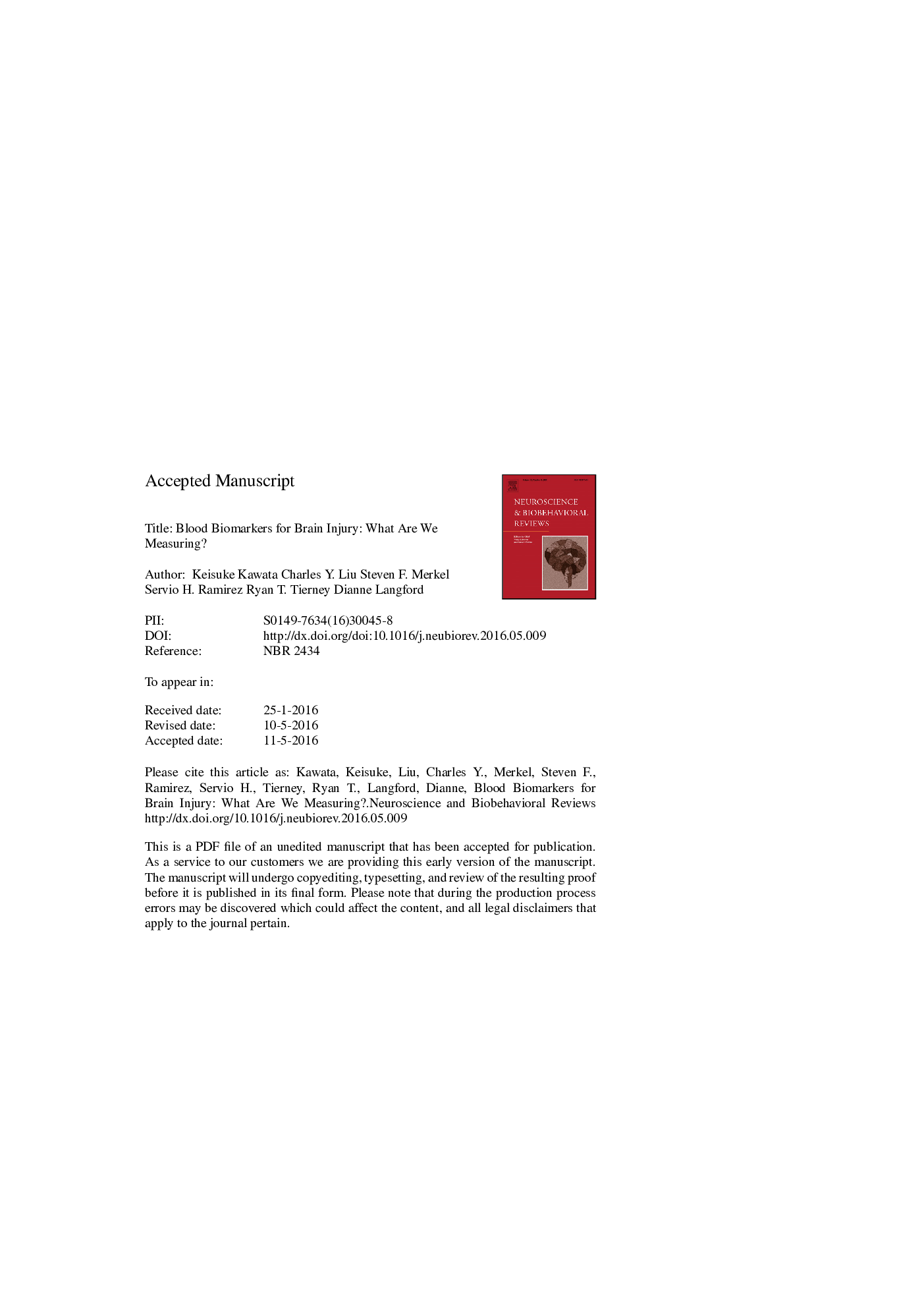| Article ID | Journal | Published Year | Pages | File Type |
|---|---|---|---|---|
| 7302906 | Neuroscience & Biobehavioral Reviews | 2016 | 41 Pages |
Abstract
Accurate diagnosis for mild traumatic brain injury (mTBI) remains challenging, as prognosis and return-to-play/work decisions are based largely on patient reports. Numerous investigations have identified and characterized cellular factors in the blood as potential biomarkers for TBI, in the hope that these factors may be used to gauge the severity of brain injury. None of these potential biomarkers have advanced to use in the clinical setting. Some of the most extensively studied blood biomarkers for TBI include S100β, neuron-specific enolase, glial fibrillary acidic protein, and Tau. Understanding the biological function of each of these factors may be imperative to achieve progress in the field. We address the basic question: what are we measuring? This review will discuss blood biomarkers in terms of cellular origin, normal and pathological function, and possible reasons for increased blood levels. Considerations in the selection, evaluation, and validation of potential biomarkers will also be addressed, along with mechanisms that allow brain-derived proteins to enter the bloodstream after TBI. Lastly, we will highlight perspectives and implications for repetitive neurotrauma in the field of blood biomarkers for brain injury.
Related Topics
Life Sciences
Neuroscience
Behavioral Neuroscience
Authors
Keisuke Kawata, Charles Y. Liu, Steven F. Merkel, Servio H. Ramirez, Ryan T. Tierney, Dianne Langford,
